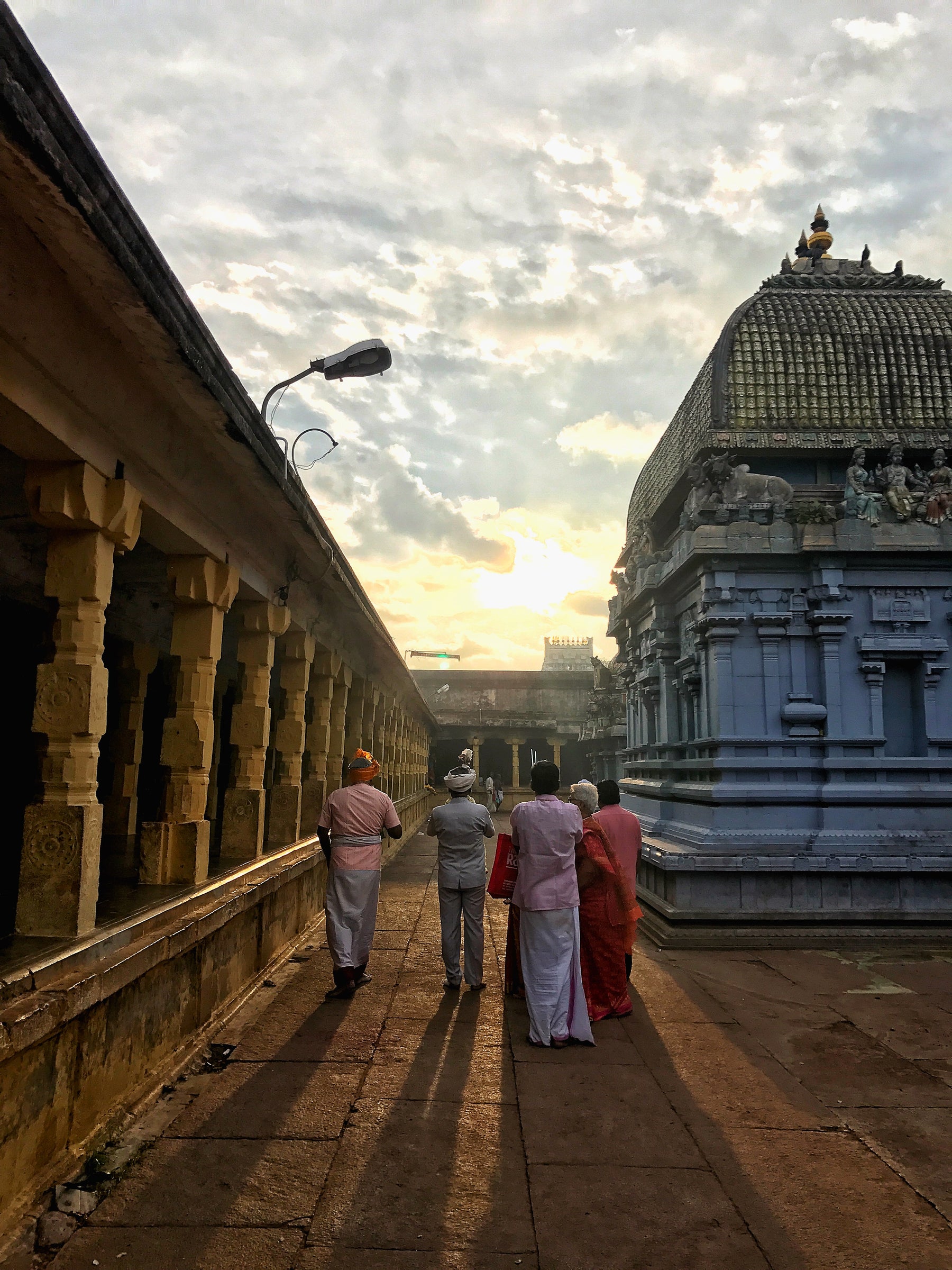
Puthandu Vazhthukkal (Happy New Year)

The Tamil New Year, known as Puthuvarusham or Puthandu in Tamil, falls in the month of Chithirai. It is on the first day of the year on the Tamil calendar. The New Year, which falls on April 14th, is popularly celebrated as Varusha Pirappu or Chithirai Kani.
And what could be the significance of the New Year being celebrated on the first day of the month of Chithirai? The first day of Chithirai month is the day of the equinox. This is when day and night are approximately of equal duration all over the planet because of astronomical activity. A number of other states celebrate New Year on this day: celebrated as Mesha Sankranti in Orissa, Nobo Borsho in West Bengal, Vishu in Kerala and Rongali Bihu in Assam. This day also marks the first day of the Hindu solar calendar, which follows the vernal equinox.
Even though equinox falls on March 22, Tamilians, like the Assamese, Malayalis, and Punjabis, among many others, follow the SiSiderealear, not the Tropical year, and hence celebrate New Year on April 14th. According to the Gregorian calendar, the Tamil Puthandi usually falls on 13th or 14th April. The date for the celebration of the Tamil New Year has always been debated due to the following of different calendars.
Stories and tales
As with all festivals and important days, there are a number of interesting stories related to the Tamil New Year. Some believe that goddess Meenakshi tied the nuptial lock with lord Sundareswara on the Tamil New Year. Others believe that Lord Brahma – the god of creation - began the creation on this day.
The day is considered to be really important for those involved in the agricultural activity, as it is a time for new beginnings and changing the ways of life. With the change in the temperature and environment, those in agricultural activities have to make significant changes to their life and work.
Festive flavours
Flavours have a special significance in the Tamil New Year. The meals are prepared in a manner that includes six flavours: bitter, sweet, sour, pungent, salty and astringent. The different flavours imply that life has ups and downs and that it can be sweet and bitter. Having all the six flavours signifies good health, too.
Some of the dishes specially prepared for the occasion include:
Maanga Pachadi, of a sweet, sour and bitter taste, it is prepared on New Year’s Eve with mango and neem flowers that give it the tastes, signifying the different aspects of life. This is eaten as the first thing on the morning of the New Year day. Neem being a sacred tree and having medicinal qualities are considered to be auspicious and healthy and hence added to this dish. It keeps the intestine healthy and prepares the stomach for a lavish New Year meal. The bitter taste also signifies that one is able to take life’s bitterness.
Mango Pachadi, a combination of sour and sweet flavours, it symbolizes the mix of emotions in our lives. It is prepared with unripe raw mangoes and jaggery.
Rice kheer is another dish that is made with milk, rice or vermicelli or sago. It adds sweetness to the meals. Cucumber raita helps beat the heat of the season. Other Puthandu dishes include raw plantain curry, vegetable stew, potato curry, pappad, and buttermilk.
Of customs and traditions
Festivals are more about unique customs, traditions, and activities that are followed and have a special significance on a particular day. They have meanings, sometimes known to us, sometimes not known. Tamil Puthandu, too, has a number of customs.
“Puttandu valttukkal!" or "Iniya puttantu nalvalttukkal!"
That’s the way people greet each other on this day. It is equivalent to "Happy new year". Youngsters greet elders to get their blessings. Elders give gifts and money to the young ones as a blessing and a sign of good luck. Friends and families meet each other by visiting in each other’s homes and share greetings. Meanwhile, these greetings are shared across borders and countries all over the world, as different countries and the Tamil diaspora celebrate the new year wherever they are.
Kani Parthal or Kanni Kannudhal (seeing the fruits / auspicious sight)
On the eve of Puthandu, mango, banana, jackfruit, betel leaves and areca nut are arranged in a tray along with jewelry, money, flowers and a mirror. This tray is to be viewed upon waking up in the morning. Seeing the real pooja plate and its reflection in the mirror is considered auspicious and as a blessing for abundance. Quite literally, it symbolizes double happiness and wealth. The Pudhu Panchangam is also read out as part of the Puthandu rituals.
Colours and shades
Colours have a special significance to Indian festivals. On the Tamil New Year, elaborate kolams (rangolis) in bright colours are made in the front of the house near the door. The kolams are considered auspicious and to bring prosperity. Many place a decorated lamp (Kuthuvillakku) in the center of a colorful kolam to bring light to the home. The entrance of houses are decorated with turmeric, sandal, and vermilion, and fresh mango tree leaves are tied at the entrance as a torana.
Waking up early morning before sunrise and taking a bath is followed by preparations for the pooja. Different people worship different deities. Mango leaves, decorations, fresh flowers, fruits, coconut, neem leaves, raw rice and pulses, and betel leaves are some of the things used during the pooja.
A head bath is considered a must. After bathing, the elders share gifts with the family members. All the dishes cooked are placed as offerings for the pooja. The pooja mostly comprises of a simple aarti followed by having a spoonful of neem pachadi.
Celebratory vibe
The mood is festive, positive and happy. Youngsters take blessings from the elders, as well as money as blessings. The elders and other family members make arrangements for the pooja, clean and decorate the house and the vibe is generally happy and celebratory. Everything feels fresh. Clean houses, decorated with colorful kolams, new clothes and the smells of the incense sticks have engulfed homes and neighborhoods. Temples are prepared for lavish poojas and greetings are shared with family and friends.
With the beginning of Agni nakshatra, one must change ways of living. From the kind of food, one eats, what time one wakes up and how one walks. The Tamil New Year is considered as an opportunity to bring a new quality to everyone’s life. It is a motivation for change. The sun’s rays and intensity increases urging people to intensify their own spiritual intensity.
Wears and garments
As with most festivals, people wear new and festive clothes for the New Year. Men wear fresh white mundus (lungis), while women prefer to wear their best silk sarees. Some choose to wear Kanjeevarams and other beautiful weaves.
Celebrations in different parts of the country and world
Puthandu is celebrated by Tamilians outside Tamil Nadu and Puducherry, too. Countries such as in Sri Lanka, Malaysia, Singapore, Reunion, Mauritius and other countries with Tamil Diaspora celebrate the Tamil New Year.
In Madurai, the temple city, the Chitterai Thiruvizha is celebrated in the Meenakshi Temple. A huge exhibition is held, called Chitterai Porutkaatchi. On the day of Tamil New Year, a big Car Festival is held at Tiruvidaimarudur near Kumbakonam. Festivals are also held at Tiruchirapalli, Kanchipuram and many other places.
In Sri Lanka, Tamilians observe the traditional New Year in April with the first financial transaction known as the 'Kai-vishesham'. The event is also observed with the 'arpudu' or the first ploughing of the ground to prepare for the new agricultural cycle. The game of 'por-thenkai' or coconut wars between youth is played in villages through the Tamil north and east of the island while cart races are also held. The festive Puthandu season in April is a time for family visits and the renewal of filial bonds. It coincides with the Sinhalese New Year season.
In the Asian countries of Malaysia and Singapore, Tamilians celebrate the New Year along with Sikhs, Malayalees, and Bengalis who too celebrate the traditional New Year in mid-April. In Mauritius, large Indian communities, specifically Tamilians, celebrate the New Year with great enthusiasm and dance displays. Cambodia and Myanmar too celebrate the same day as New Year.
The Tamil New Year is celebrated with grace and enthusiasm, keeping to traditions and customs. Some of the rituals, that are so unique and intrinsic to this festival, make it special. It is a special day for us at Sarangi and an opportunity for us to share this special day with all our customers and supporters. We wish you a Happy New Year. Puthandu Vazhthukkal!
